|
The 3D Cabrillo Biomodel library contains free downloadable versions of many of the prominent organisms found in our Rocky Intertidal Zone. To create your models, take any of these .STL files to your local library or personal 3D printer. Printing Disclaimer: Many 3D printers are configured differently and some of the models might have to be slightly modified in order to print properly.
 Anemone (Anthopleura sola): The Starburst Sea Anemone is mostly found in low tidal zones along the coasts of Southern California and Central America. These sea anemones can grow up to 23 cm (10 inches) long. They are mostly green and blue and resemble an upside-down jellyfish. Anemone (Anthopleura sola): The Starburst Sea Anemone is mostly found in low tidal zones along the coasts of Southern California and Central America. These sea anemones can grow up to 23 cm (10 inches) long. They are mostly green and blue and resemble an upside-down jellyfish.Download: Anemone 1 (136MB), Anemone 2 (181MB), Anemone 3 (144MB)  Bat Star (Patiria miniata): Bat Stars can be found on hard surfaces in the low tide zone and subtidally along the Pacific coast from Alaska to Baja California. They grow to be 15-20 cm (6-8 inches) in diameter, and can be brown, orange, or shades of purple. As their name suggests, they have webbing in between their arms that makes them look like bat wings. Bat Star (Patiria miniata): Bat Stars can be found on hard surfaces in the low tide zone and subtidally along the Pacific coast from Alaska to Baja California. They grow to be 15-20 cm (6-8 inches) in diameter, and can be brown, orange, or shades of purple. As their name suggests, they have webbing in between their arms that makes them look like bat wings.Download: Bat Star (75MB)  Blind Goby (Typhlogobius californiensis): The Blind Goby can be found throughout Southern California and Baja California inhabiting burrows, caves, and rock crevices in shallow waters. Blind Gobies have feathery fins and can are typically about 8 cm (3 inches) in size. While these fish are completely blind and colorless as adults, the juveniles have simple eyes that help them navigate the intertidal and find a suitable home. Blind Goby (Typhlogobius californiensis): The Blind Goby can be found throughout Southern California and Baja California inhabiting burrows, caves, and rock crevices in shallow waters. Blind Gobies have feathery fins and can are typically about 8 cm (3 inches) in size. While these fish are completely blind and colorless as adults, the juveniles have simple eyes that help them navigate the intertidal and find a suitable home.Download: Blind Goby (5MB) 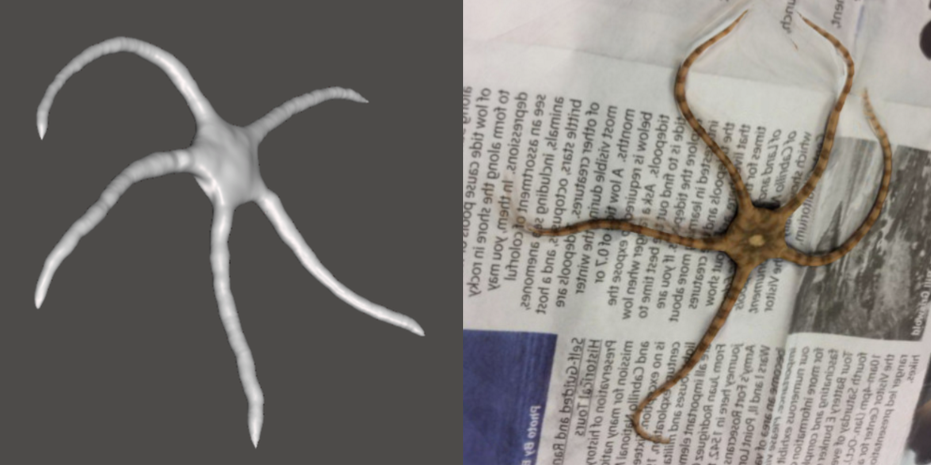 Brittle Star (Ophioderma panamense): Relatives of sea stars, brittle stars are echinoderms with 5 arms radiating from a central disk. Unlike sea stars, however, their arms are jointed and flexible, allowing them to move quickly to scavenge in the intertidal. This species grows to about 15-20 cm (6-8 inches) and has dark bands on its arms. You can often find these creatures under rocks and seaweeds in the mid to low intertidal. Brittle Star (Ophioderma panamense): Relatives of sea stars, brittle stars are echinoderms with 5 arms radiating from a central disk. Unlike sea stars, however, their arms are jointed and flexible, allowing them to move quickly to scavenge in the intertidal. This species grows to about 15-20 cm (6-8 inches) and has dark bands on its arms. You can often find these creatures under rocks and seaweeds in the mid to low intertidal.Download: Brittle Star (33MB)  California Clingfish (Gobiesox rhessodon): The California Clingfish is a small intertidal fish that can be found throughout Southern California and Baja California. They grow to be about 5 cm (2 inches) in length and are usually orange, black, or gray in color with 3 lighter bands. These fish have a suction disk on their lower surface that allows them to consume small prey such as small crustaceans and marine worms. California Clingfish (Gobiesox rhessodon): The California Clingfish is a small intertidal fish that can be found throughout Southern California and Baja California. They grow to be about 5 cm (2 inches) in length and are usually orange, black, or gray in color with 3 lighter bands. These fish have a suction disk on their lower surface that allows them to consume small prey such as small crustaceans and marine worms.Download: Clingfish (12MB)  Chambered Nautilus (Nautilus pompilius): The Chambered Nautilus is a deep-sea Cephalopod related to octopus and squid. These primitive creatures have more than 90 tentacles that lack suckers to use for capturing small prey. The nautilus is the only cephalopod to retain its external shell, which it fills with gas to maintain buoyancy and control diving depth. This shell is white with red-orange stripes, and grows to be roughly 20 cm (8 inches) in diameter. Chambered Nautilus (Nautilus pompilius): The Chambered Nautilus is a deep-sea Cephalopod related to octopus and squid. These primitive creatures have more than 90 tentacles that lack suckers to use for capturing small prey. The nautilus is the only cephalopod to retain its external shell, which it fills with gas to maintain buoyancy and control diving depth. This shell is white with red-orange stripes, and grows to be roughly 20 cm (8 inches) in diameter.Download: Chambered Nautilus (127MB)  Chestnut Cowrie (Cypraea spadicea): These carnivorous snails can be found in the subtidal zone to depths of 45 m (150 feet) from Monterey to Baja California. They grow to be about 2-4 cm (1.5-2.5 inches), and have a characteristic long, smooth shell. The Chestnut Cowrie shell is brown on top and white on the bottom, with 20-25 tooth-like denticles lining the narrow aperture, where the soft body of the snail protrudes. Chestnut Cowrie (Cypraea spadicea): These carnivorous snails can be found in the subtidal zone to depths of 45 m (150 feet) from Monterey to Baja California. They grow to be about 2-4 cm (1.5-2.5 inches), and have a characteristic long, smooth shell. The Chestnut Cowrie shell is brown on top and white on the bottom, with 20-25 tooth-like denticles lining the narrow aperture, where the soft body of the snail protrudes.Download: Chestnut Cowrie (22MB)  Conspicuous Chiton (Stenoplax conspicua): The Conspicuous Chiton is commonly found on the rocks in the middle to low intertidal zone from Santa Barbara to Baja California. Chitons have 8 shell-like plates to protect them from predators. On average, these chitons grow to be about 10.5 cm (4 inches) long. Like snails, they have a tooth-like structure known as a radula to scrape algae off the rocks. Conspicuous Chiton (Stenoplax conspicua): The Conspicuous Chiton is commonly found on the rocks in the middle to low intertidal zone from Santa Barbara to Baja California. Chitons have 8 shell-like plates to protect them from predators. On average, these chitons grow to be about 10.5 cm (4 inches) long. Like snails, they have a tooth-like structure known as a radula to scrape algae off the rocks.Download: Conspicuous Chiton (19MB)  Garibaldi (Hypsypops rubicundus): Commonly found in the low intertidal zone from Monterey Bay to Baja California, the Garibaldi is the state marine fish of California. These fish can grow to be 36 cm (14.5 inches). As adults, they are bright orange in color, but the smaller juveniles are bright orange with blue dots on the top of their bodies. Garibaldi (Hypsypops rubicundus): Commonly found in the low intertidal zone from Monterey Bay to Baja California, the Garibaldi is the state marine fish of California. These fish can grow to be 36 cm (14.5 inches). As adults, they are bright orange in color, but the smaller juveniles are bright orange with blue dots on the top of their bodies.Download: Adult Garibaldi (10MB), Juvenile Garibaldi (3MB) 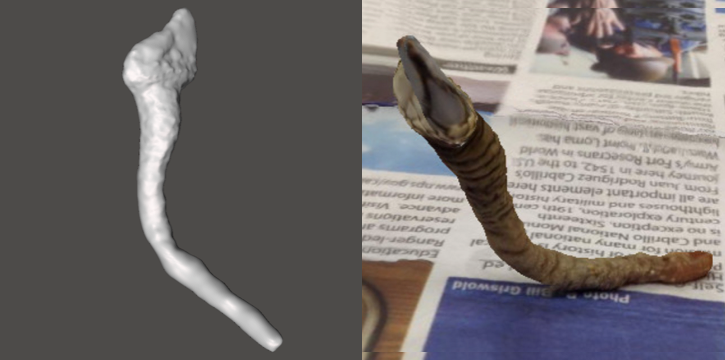 Gooseneck Barnacle (Pollicipies polymerus): Gooseneck Barnacles are common in the middle intertidal of the rocky shore. Goosenecks average about the size of your finger, but can be as long as 13.8 cm (6 inches). True to their name, these barnacles have a fleshy, chalk-white stalk that resembles the neck of a goose. Gooseneck Barnacle (Pollicipies polymerus): Gooseneck Barnacles are common in the middle intertidal of the rocky shore. Goosenecks average about the size of your finger, but can be as long as 13.8 cm (6 inches). True to their name, these barnacles have a fleshy, chalk-white stalk that resembles the neck of a goose.Download: Gooseneck Barnacle (Single) (6MB), Gooseneck Barnacle (Two) (148MB)  Green Abalone (Haliotis fulgens): Green Abalone can be found from Northern California to Baja California under rocks and boulders grazing on algae. The largest ones are found subtidally and can grow 20-23 cm (8-9 inches) long, while the ones found in the low tide zone are usually smaller. They resemble snails and limpets but have 5-7 characteristic volcano-shaped holes in their shell that function in respiration. Green Abalone (Haliotis fulgens): Green Abalone can be found from Northern California to Baja California under rocks and boulders grazing on algae. The largest ones are found subtidally and can grow 20-23 cm (8-9 inches) long, while the ones found in the low tide zone are usually smaller. They resemble snails and limpets but have 5-7 characteristic volcano-shaped holes in their shell that function in respiration.Download: Green Abalone (5MB)  Horn Shark (Heterodontus francisci): Horn Sharks are found lurking in shallow waters among caves and kelp from Central California to Baja California. They can grow up to 1.2 m (4 feet) in size and are nocturnal hunters that feed on bottom-dwelling invertebrates such as sea urchins and crabs. Horn Sharks are named for the horn-like spines on the front of their dorsal fins. Horn Shark (Heterodontus francisci): Horn Sharks are found lurking in shallow waters among caves and kelp from Central California to Baja California. They can grow up to 1.2 m (4 feet) in size and are nocturnal hunters that feed on bottom-dwelling invertebrates such as sea urchins and crabs. Horn Sharks are named for the horn-like spines on the front of their dorsal fins.Download: Horn Shark (24MB), Horn Shark egg (11MB)  Kellet’s Whelk (Kelletia kelletii): Commonly found from Monterey Bay to Baja California, the Kellet’s Whelk lives in the low intertidal zone or subtidal. It is a larger gastropod and can grow up to 18 cm (7 inches) in length. They have a tan spiraled shell that is often covered in algae, which camouflages the snail. Kellet’s Whelk (Kelletia kelletii): Commonly found from Monterey Bay to Baja California, the Kellet’s Whelk lives in the low intertidal zone or subtidal. It is a larger gastropod and can grow up to 18 cm (7 inches) in length. They have a tan spiraled shell that is often covered in algae, which camouflages the snail.Download: Kellet’s Whelk (205MB)  Kelp Crab (Taliepus nuttallii): The Kelp Crab can be found from Santa Barbara to Baja California among the kelp. This crab is usually brick red and can grow up to be 10.5 cm (4 inches) wide. While this species is most common in the subtidal zone, individuals are sometimes swept up into the low intertidal. Kelp Crab (Taliepus nuttallii): The Kelp Crab can be found from Santa Barbara to Baja California among the kelp. This crab is usually brick red and can grow up to be 10.5 cm (4 inches) wide. While this species is most common in the subtidal zone, individuals are sometimes swept up into the low intertidal.Download: Kelp Crab 1 (Pugettia pugetti) (136MB), Kelp Crab 2 (21MB)  Kelp Snail (Norrisia norrisi): Kelp Snails can be found grazing on algae in the low intertidal and subtidal zones from Point Conception to Baja California. These snails have a characteristic bright orange foot, a brown-coiled shell, and grow to be about 4 cm (2 inches). Like other members of this family of snails, Kelp Snails have small sensory tentacles lining the base of their muscular foot. Kelp Snail (Norrisia norrisi): Kelp Snails can be found grazing on algae in the low intertidal and subtidal zones from Point Conception to Baja California. These snails have a characteristic bright orange foot, a brown-coiled shell, and grow to be about 4 cm (2 inches). Like other members of this family of snails, Kelp Snails have small sensory tentacles lining the base of their muscular foot.Download: Kelp Snail 1 (38MB), Kelp Snail 2 (36MB)  Keyhole Limpet (Megathura crenulata): Commonly found in the low intertidal zone off the coast from Alaska to Baja California, Keyhole Limpets can grow up to 13.2 cm (5.2 inches) long. The fleshy mantle of the limpet can have many different colors such as black and tan, deep blue and purple, or even magenta. Keyhole Limpet (Megathura crenulata): Commonly found in the low intertidal zone off the coast from Alaska to Baja California, Keyhole Limpets can grow up to 13.2 cm (5.2 inches) long. The fleshy mantle of the limpet can have many different colors such as black and tan, deep blue and purple, or even magenta.Download: Keyhole Limpet (83MB), Keyhole Limpet (Shell) (19MB)  Leopard Shark (Triakis semifasciata): Leopard Sharks are found throughout shallow waters along the coast from Oregon to Baja California and the Gulf of Mexico. Females are usually larger than males, and can grow up to 2.1 m (7 feet) long. These sharks spend most of their time along the sea floor feeding on invertebrates such as clams and crabs. As their name suggests, Leopard Sharks have dark spots along their backs that resemble leopard spots. Leopard Shark (Triakis semifasciata): Leopard Sharks are found throughout shallow waters along the coast from Oregon to Baja California and the Gulf of Mexico. Females are usually larger than males, and can grow up to 2.1 m (7 feet) long. These sharks spend most of their time along the sea floor feeding on invertebrates such as clams and crabs. As their name suggests, Leopard Sharks have dark spots along their backs that resemble leopard spots.Download: Leopard Shark (17MB), Leopard Shark Jaw (19MB) 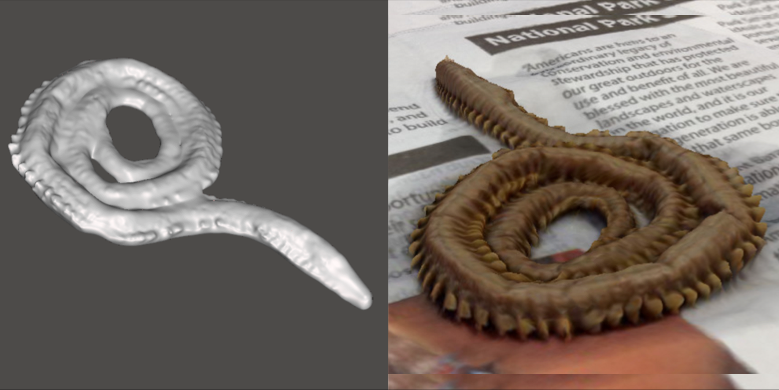 Marine Worms (Annelids): Found in a variety of habitats in waters all over the world, members of this diverse and abundant group of animals are often overlooked in the intertidal due to their small size. While most Marine Worms are free-living and spend their time crawling along ocean surfaces, some Marine Worms burrow in the sand, some build tubes to live in, and still others are parasitic. Individual species of Marine Worms are not easily identified by even the best experts, but keep an eye out for them whenever you venture to the beach or rocky intertidal. Marine Worms (Annelids): Found in a variety of habitats in waters all over the world, members of this diverse and abundant group of animals are often overlooked in the intertidal due to their small size. While most Marine Worms are free-living and spend their time crawling along ocean surfaces, some Marine Worms burrow in the sand, some build tubes to live in, and still others are parasitic. Individual species of Marine Worms are not easily identified by even the best experts, but keep an eye out for them whenever you venture to the beach or rocky intertidal.Download: Marine Worms (84MB)  Mussels (Mytilus californianus): Mussels are often found throughout the intertidal zone attached to hard surfaces. California Mussels live along the Pacific coast from Alaska to Baja California. These mussels are 7-12 cm (3-5 inches) long, and have a black teardrop-shaped shell. Mussels (Mytilus californianus): Mussels are often found throughout the intertidal zone attached to hard surfaces. California Mussels live along the Pacific coast from Alaska to Baja California. These mussels are 7-12 cm (3-5 inches) long, and have a black teardrop-shaped shell.Download: Mussel (Full) (86MB), Mussel (Half) (91MB)  Nudibranch (Dorids): Also known as sea slugs, nudibranchs are small, soft-bodied snails that lack shells. Nudibranchs are typically brightly colored and conspicuous, which reflects their carnivorous diet of sponges, bryozoans, or sea anemones. While they typically don’t have eyes, nudibranchs have chemosensory tentacles on their heads called rhinophores to detect their environment. This diverse group of animals can be found along the coast in the low tide zones and subtidal zones crawling along ocean surfaces. Nudibranch (Dorids): Also known as sea slugs, nudibranchs are small, soft-bodied snails that lack shells. Nudibranchs are typically brightly colored and conspicuous, which reflects their carnivorous diet of sponges, bryozoans, or sea anemones. While they typically don’t have eyes, nudibranchs have chemosensory tentacles on their heads called rhinophores to detect their environment. This diverse group of animals can be found along the coast in the low tide zones and subtidal zones crawling along ocean surfaces.Download: Nudibranch (33MB) 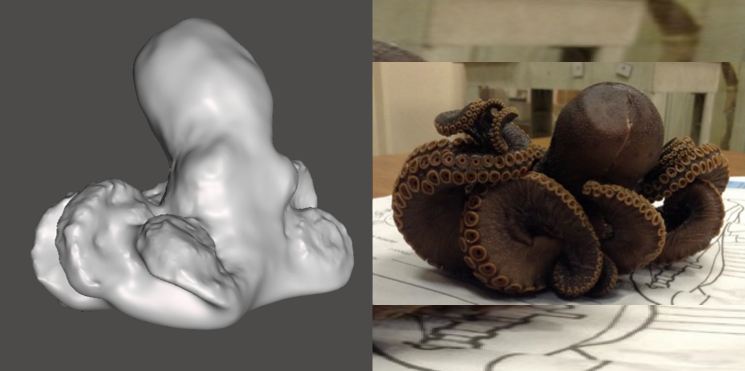 Octopus (Octopus bimaculoides): The Two-Spot Octopus can be found from Central California to Baja California in the middle intertidal to depths of about 50 feet. They are usually a mottled brown color and grow to be around 1 m (3 feet) long. They are distinguished by their blue faux eye spots below their actual eyes, which confuse both predators and prey. Octopus (Octopus bimaculoides): The Two-Spot Octopus can be found from Central California to Baja California in the middle intertidal to depths of about 50 feet. They are usually a mottled brown color and grow to be around 1 m (3 feet) long. They are distinguished by their blue faux eye spots below their actual eyes, which confuse both predators and prey.Download: Octopus (20MB), Octopus (Arm Stretch) (193MB), Octopus (Side) (280MB), Octopus (Together) (227MB)  Opaleye (Girella nigricans): Opaleye are commonly found in shallow waters off the southern coast of California and northern Mexico. Juveniles are found in the intertidal and grow to 5-10 cm (2-4 inches) before moving to the subtidal as larger adults. Opaleye have small white spots on their backs and bright blue-green eyes. Opaleye (Girella nigricans): Opaleye are commonly found in shallow waters off the southern coast of California and northern Mexico. Juveniles are found in the intertidal and grow to 5-10 cm (2-4 inches) before moving to the subtidal as larger adults. Opaleye have small white spots on their backs and bright blue-green eyes.Download: Opaleye (6MB)  Owl Limpet (Lottia gigantea): Located on rocky faces throughout the high and middle Cabrillo Intertidal zones, Owl Limpets are approximately 10 cm (4 inches) or greater in length. They have a lumpy, low profile shell that is mottled white, brown, and black coloring. Owl Limpet (Lottia gigantea): Located on rocky faces throughout the high and middle Cabrillo Intertidal zones, Owl Limpets are approximately 10 cm (4 inches) or greater in length. They have a lumpy, low profile shell that is mottled white, brown, and black coloring. Download: Owl Limpet (18MB)  Rock Crab (Cancer antennarius): These rock crabs are common throughout the low intertidal from Oregon to Baja California feeding on a variety of animals, namely hermit crabs. These crabs are brick red with yellow splotches, and while females are slightly smaller, male bodies grow to be about 12 cm (5 inches) wide. Rock crabs have large, strong pinchers used for cracking open the shells of their prey. Rock Crab (Cancer antennarius): These rock crabs are common throughout the low intertidal from Oregon to Baja California feeding on a variety of animals, namely hermit crabs. These crabs are brick red with yellow splotches, and while females are slightly smaller, male bodies grow to be about 12 cm (5 inches) wide. Rock crabs have large, strong pinchers used for cracking open the shells of their prey.Download: Rock Crab (190MB)  Sand Dollar (Dendraster excentricus): This Sand Dollar can be found along the sandy shores to depths of about 30 m (100 feet) from Alaska to Baja California. As relatives of sea urchins, sand dollars are typically shades of purple and are covered in small, mobile, protective spines. These animals grow to about 7 cm (3 inches) and burrow halfway in the sand, suspension feeding by collecting small food particles from the water. Sand Dollar (Dendraster excentricus): This Sand Dollar can be found along the sandy shores to depths of about 30 m (100 feet) from Alaska to Baja California. As relatives of sea urchins, sand dollars are typically shades of purple and are covered in small, mobile, protective spines. These animals grow to about 7 cm (3 inches) and burrow halfway in the sand, suspension feeding by collecting small food particles from the water.Download: Sand Dollar 1 (22MB), Sand Dollar 2 (63MB)  Scallop (Leopecten diegensis): This marine bivalve, native to San Diego and found as far south as Baja California, is a free-swimming relative of clams and mussels. It is found subtidally in muddy or sandy substrates, suspension feeding on small particles it obtains from the water. This species has the characteristic fan-shaped shell and is mottled red-white in color. Scallop (Leopecten diegensis): This marine bivalve, native to San Diego and found as far south as Baja California, is a free-swimming relative of clams and mussels. It is found subtidally in muddy or sandy substrates, suspension feeding on small particles it obtains from the water. This species has the characteristic fan-shaped shell and is mottled red-white in color.Download: Scallop (23MB)  Sea Star (Pisaster giganteus): These sea stars are found in the low intertidal and subtidal along the coast from British Columbia to Mexico. Giant sea stars grow about 46 cm (18 inches) in diameter. Many of the individuals of this species have been decimated due to Sea Star Wasting disease. Sea Star (Pisaster giganteus): These sea stars are found in the low intertidal and subtidal along the coast from British Columbia to Mexico. Giant sea stars grow about 46 cm (18 inches) in diameter. Many of the individuals of this species have been decimated due to Sea Star Wasting disease.Download: Sea Star 1 (125MB), Sea Star 2 (33MB), Sea Star 3 (178MB)  Sea Urchin (Strongylocentrotus purpuratus): Sea Urchins are commonly found in the subtidal kelp forest from Alaska to Baja California, but can also crawl to the low intertidal zone. They hide beneath shells and under rocks to protect themselves from the sun. Sea urchins can be up to 7 cm (3 inches) in diameter and resemble a purple pin cushion. Sea Urchin (Strongylocentrotus purpuratus): Sea Urchins are commonly found in the subtidal kelp forest from Alaska to Baja California, but can also crawl to the low intertidal zone. They hide beneath shells and under rocks to protect themselves from the sun. Sea urchins can be up to 7 cm (3 inches) in diameter and resemble a purple pin cushion.Download: Sea Urchin (34MB) 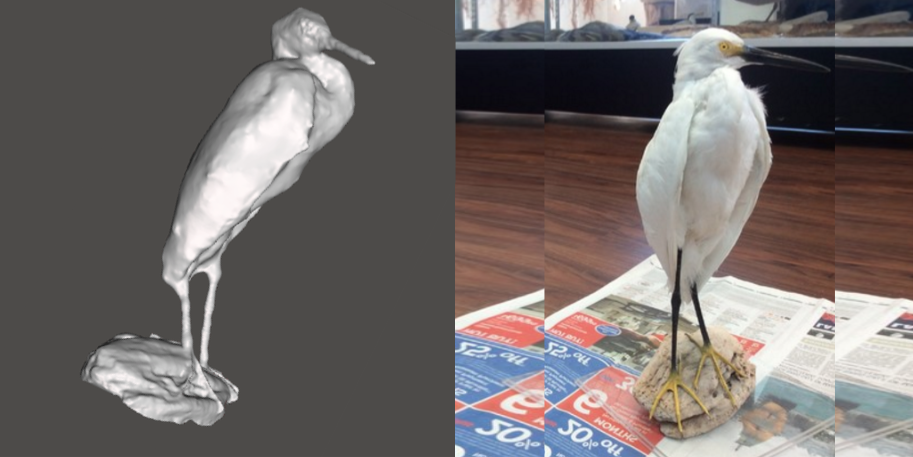 Snowy Egret (Egretta thula): The Snowy Egret can be found wading in shallow waters along the Pacific Coast from Northern California to Baja Mexico. This bird has white feathers with a black beak, black legs, yellow feet, and yellow eyes. It can grow to be 66 cm (26 inches), and employs a sit-and-wait technique to catch prey such as small fish and crustaceans. Snowy Egret (Egretta thula): The Snowy Egret can be found wading in shallow waters along the Pacific Coast from Northern California to Baja Mexico. This bird has white feathers with a black beak, black legs, yellow feet, and yellow eyes. It can grow to be 66 cm (26 inches), and employs a sit-and-wait technique to catch prey such as small fish and crustaceans.Download: Snowy Egret (70MB) 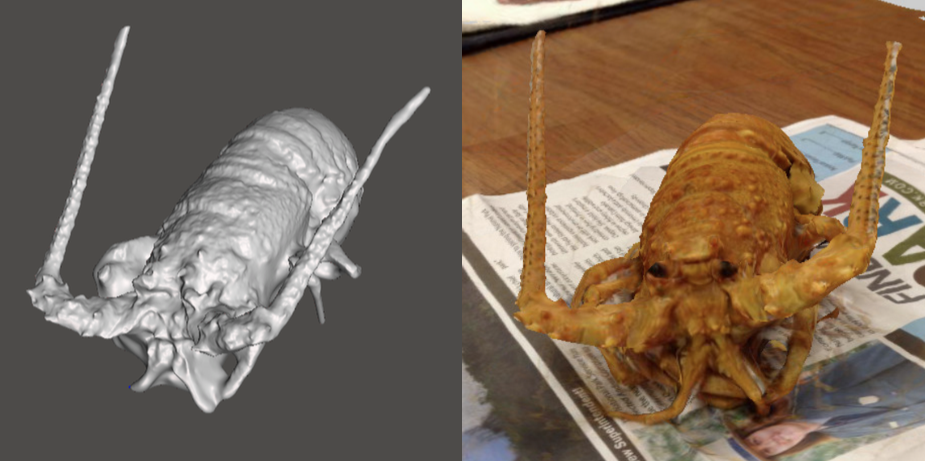 Spiny Lobster (Panulirus interruptus): California Spiny Lobsters are sometimes found in the middle intertidal zone but mainly live in deeper waters from Southern California to Baja California. Spiny Lobsters average roughly 30 cm (12 inches) in length. Spiny Lobsters are often a dark red and orange color with multiple spines on their bodies, but lack claws like the American Lobster. Spiny Lobster (Panulirus interruptus): California Spiny Lobsters are sometimes found in the middle intertidal zone but mainly live in deeper waters from Southern California to Baja California. Spiny Lobsters average roughly 30 cm (12 inches) in length. Spiny Lobsters are often a dark red and orange color with multiple spines on their bodies, but lack claws like the American Lobster.Download: Spiny Lobster (222MB)  Squid (Doryteuthis opalescens): Squid are nocturnal hunters that spend their days at depths of up to 150 m (500 feet), coming to the surface at night to feed on small prey such as fish and crustaceans. These squid, common throughout the Pacific Ocean, grow to be about 16 cm (6 inches) long. Like their Octopus relatives, squid have many tentacles with suckers on them used for capturing prey. Squid (Doryteuthis opalescens): Squid are nocturnal hunters that spend their days at depths of up to 150 m (500 feet), coming to the surface at night to feed on small prey such as fish and crustaceans. These squid, common throughout the Pacific Ocean, grow to be about 16 cm (6 inches) long. Like their Octopus relatives, squid have many tentacles with suckers on them used for capturing prey.Download: Squid (148MB)  Striped Shore Crab (Pachygrapsus crassipes): Usually found throughout the mid-high intertidal zone from southern Oregon to Baja California, the striped shore crab can grow up to 4.8 cm (2 inches). Striped shore crabs normally live in rock crevices, tide pools, and mussel beds. These crabs get their name from the colorful stripes on their backs. Striped Shore Crab (Pachygrapsus crassipes): Usually found throughout the mid-high intertidal zone from southern Oregon to Baja California, the striped shore crab can grow up to 4.8 cm (2 inches). Striped shore crabs normally live in rock crevices, tide pools, and mussel beds. These crabs get their name from the colorful stripes on their backs.Download: Striped Shore Crab (265MB)  Swell Shark (Cephaloscyllium ventriosum): The Swell Shark is a small shark that can grow to be about 1 m (3 feet) long, and spends its days hiding in rock crevices and nights feeding on small fish and crustaceans. This mottled brown and white shark inhabits the shallow coastal waters from Monterey Bay to Southern Mexico. When threatened, Swell Sharks will curl into a tight U-shape and swallow large amounts of water, causing their bodies to swell to twice their normal size. This behavior, which gives the Swell Shark its name, makes it hard for predators to bite or remove it from rock crevices. Swell Shark (Cephaloscyllium ventriosum): The Swell Shark is a small shark that can grow to be about 1 m (3 feet) long, and spends its days hiding in rock crevices and nights feeding on small fish and crustaceans. This mottled brown and white shark inhabits the shallow coastal waters from Monterey Bay to Southern Mexico. When threatened, Swell Sharks will curl into a tight U-shape and swallow large amounts of water, causing their bodies to swell to twice their normal size. This behavior, which gives the Swell Shark its name, makes it hard for predators to bite or remove it from rock crevices.Download: Swell Shark (28MB), Swell Shark Egg (2MB)  Thatched Barnacles (Tetraclita rubescens): Thatched Barnacles are found from Northern California to Baja California attached to rocks and other hard substrates in the mid to low intertidal zones. These barnacles grow to be about 2.5 cm (1 inch) in diameter, and have a characteristic volcano shape. Thatched Barnacles, which are Crustaceans related to crabs and shrimps, are white as juveniles and red as adults. Thatched Barnacles (Tetraclita rubescens): Thatched Barnacles are found from Northern California to Baja California attached to rocks and other hard substrates in the mid to low intertidal zones. These barnacles grow to be about 2.5 cm (1 inch) in diameter, and have a characteristic volcano shape. Thatched Barnacles, which are Crustaceans related to crabs and shrimps, are white as juveniles and red as adults.Download: Thatched Barnacles (191MB)  Turban Snail (Megastaea undosa): This snail is found in the middle, low, and sub tidal zones from Point Conception to Baja California. The turban snail has a heavy, sculpted shell that is often camouflaged by encrusting algae. Their predators include sea stars, Kellet’s whelks, octopus, and lobsters. Turban Snail (Megastaea undosa): This snail is found in the middle, low, and sub tidal zones from Point Conception to Baja California. The turban snail has a heavy, sculpted shell that is often camouflaged by encrusting algae. Their predators include sea stars, Kellet’s whelks, octopus, and lobsters.Download: Turban Snail (305MB)  Volcano Limpet (Fissurella volcano): Common under rocks and in small openings in the middle and low intertidal zones from Northern California to Baja California, Volcano Limpets are named for their volcano-shaped shells. These limpets grow to be about 2.5 cm (1 inch) long and have characteristic red, pink, and purple markings on their shell. Like the keyhole limpet, volcano limpets have a hole in the top of their shell that is used to expel waste. Volcano Limpet (Fissurella volcano): Common under rocks and in small openings in the middle and low intertidal zones from Northern California to Baja California, Volcano Limpets are named for their volcano-shaped shells. These limpets grow to be about 2.5 cm (1 inch) long and have characteristic red, pink, and purple markings on their shell. Like the keyhole limpet, volcano limpets have a hole in the top of their shell that is used to expel waste.Download: Volcano Limpet (13MB)  Western Gull (Larus occidentalis): Seen throughout the coast from British Columbia to Baja Mexico, the Western Gull scavenges beaches and rocky shores for invertebrates, fish, and small mammal prey. These social, loud birds are mostly white with grey-tipped feathers, and can grow to be 61-70 cm (24-27 inches). They use their strong beak to crack open the shells of snails and other prey. Western Gull (Larus occidentalis): Seen throughout the coast from British Columbia to Baja Mexico, the Western Gull scavenges beaches and rocky shores for invertebrates, fish, and small mammal prey. These social, loud birds are mostly white with grey-tipped feathers, and can grow to be 61-70 cm (24-27 inches). They use their strong beak to crack open the shells of snails and other prey.Download: Western Gull (138MB) 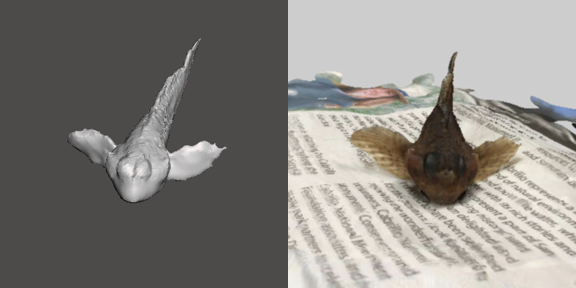 Woolly Sculpin (Clinocottus analis): The Woolly Sculpin is common in the low and mid intertidal zones from Northern California to Baja California. These intertidal fish are typically 7-12 cm (3-5 inches) long. They live along the sea floor and are mottled brown, white, and black in color to blend in with their sandy, rocky environment. Woolly Sculpin (Clinocottus analis): The Woolly Sculpin is common in the low and mid intertidal zones from Northern California to Baja California. These intertidal fish are typically 7-12 cm (3-5 inches) long. They live along the sea floor and are mottled brown, white, and black in color to blend in with their sandy, rocky environment.Download: Woolly Sculpin (24MB) |
Last updated: December 22, 2023
